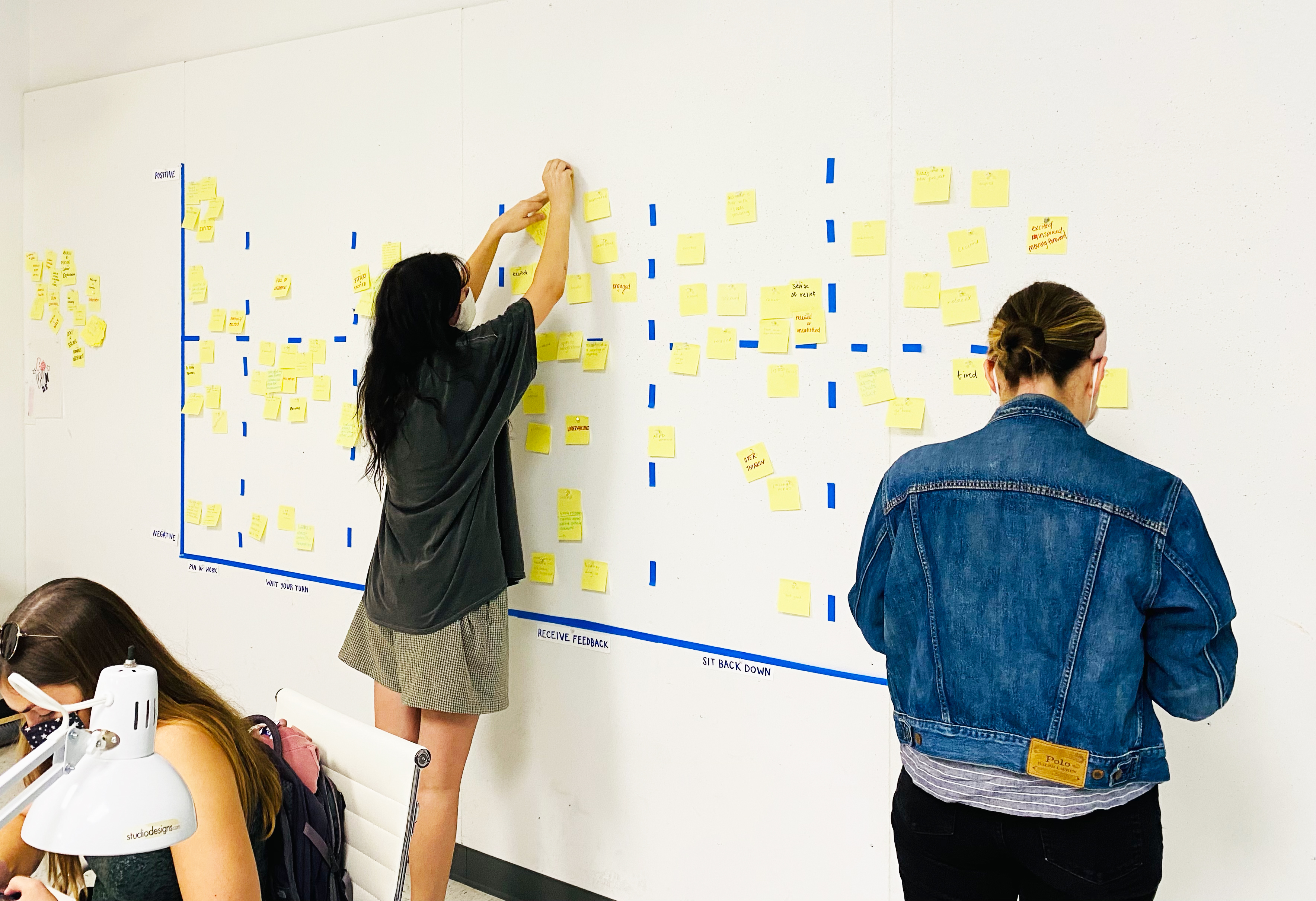Critique Chronicles
︎ 2022I know I might be in the minority here, but I love critiques. Eager to improve, I find discussion and feedback meaningful in how they can generate growth. I also love listening to others’ work being presented and commented on. There is so much that can be learned from the people around me. Within my many years of art and design school, I’ve been exposed to several different critique structures. Every professor has their own approach to giving feedback and instigating discussion. I enjoyed how this variety gave me fresh perspectives on the creative classroom. Through these instructors I also developed a new set of language for discussing work, and learned how to listen to feedback more actively.

Recently I found myself bothered by the level of student engagement within my graphic design critiques. I could tell that, within my classes, critique was a point of anxiety for a variety of reasons, and often this caused students to give limited feedback or struggle when presenting their own work. I wondered if there was a way to work with our instructors and get students excited about giving and receiving good critiques. I approached one of my professors, Dajana Nedic, with this interest and we found a shared passion for the topic of critique. She agreed to give space for addressing the topic within our class time, and under her guidance, I organized a workshop for my peers.

As graphic design students, the process of making an experience map is familiar. I felt that this would be an efficient structure for opening up a discussion about personal experience with receiving feedback. First done with taped axes and sticky notes for data points, I asked my peers to track their mood during the traditional timeline of a critique. The y-axis measures feelings on a rudimentary positive to negative scale, and the x-axis highlights different key events within the timeline. Students were asked to align their sticky notes appropriately on the y-axis scale, as well as write a description of their feelings on it.

When configuring our graph digitally, I categorized the feelings described into eight more generalized emotions. The color system helps reveal larger trends in how students are feeling at different stages in critique. That being said the trends I found were hardly universal, and no two people had the same experience. In fact, the conclusion I have come to is that successful critiques need to cater to a wide range of feelings and that empathy is key.
 Through discussion with individual classmates, the data was supported. Everyone is coming into a critique with different motives and expectations. There are students that are embarrassed when time management issues get the best of them, they hope no one makes them feel worse than they already do. There are also students that use project prompts as a time for experimentation and are eager to hear how their risks are received. When asked about what they hope to gain from critiques, answers varied. But at the core of their responses, almost everyone described a safe place to receive affirmation, points for improvement, and new perspectives.
Through discussion with individual classmates, the data was supported. Everyone is coming into a critique with different motives and expectations. There are students that are embarrassed when time management issues get the best of them, they hope no one makes them feel worse than they already do. There are also students that use project prompts as a time for experimentation and are eager to hear how their risks are received. When asked about what they hope to gain from critiques, answers varied. But at the core of their responses, almost everyone described a safe place to receive affirmation, points for improvement, and new perspectives.
When we acknowledge that we are all sharing a piece of ourselves and that talking about that work means something, critiques become a very special place. If given the right attention, critiques provide a space for learning, connection, and celebration. When Dajana started a critique committee in response to our class workshop, I was the first to join. We worked together to plan critiques that aligned with the goals of the students. These critiques always had a theme, food, coffee, decorations, and they aimed to truly be a place for celebrating the work we had made.

︎︎︎ Return to Research Blog
